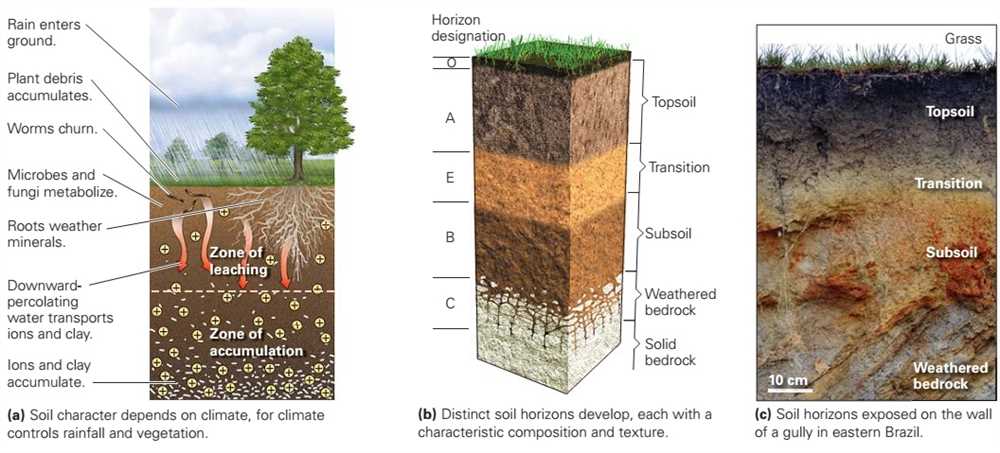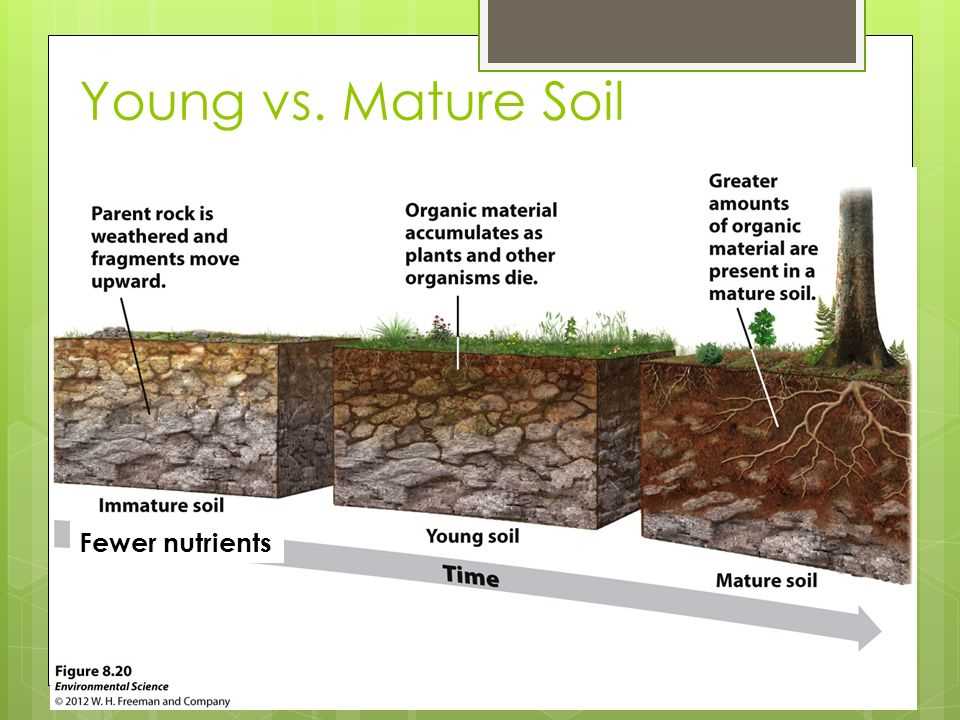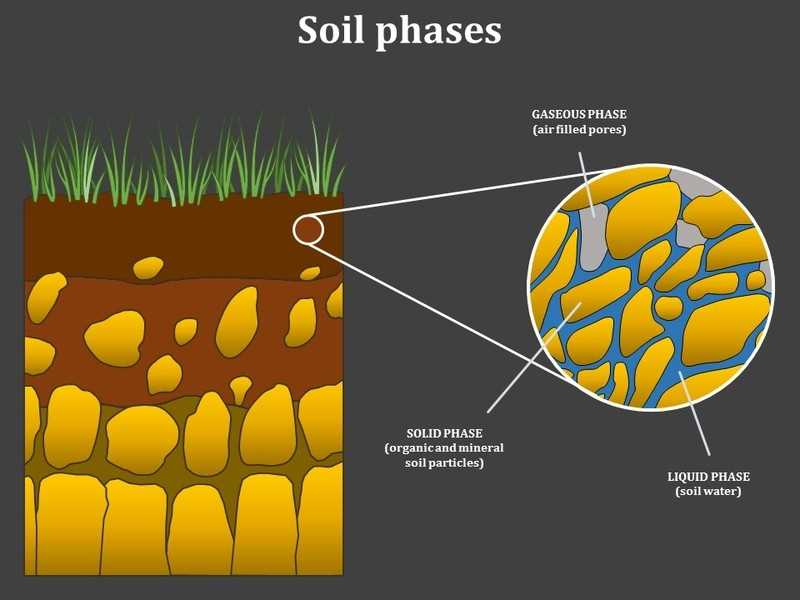
The natural environment is shaped by a myriad of factors, but none have a more profound impact on soil formation than geology. Geology, the study of the Earth’s solid materials and their processes, has a direct influence on the composition, characteristics, and fertility of soils. From the types of rocks and minerals present to the forces that shape the landscape, geology provides the foundation upon which soil development is built.
One of the key ways in which geology influences soil formation is through the parent material. Parent material refers to the chemical and physical properties of rocks and minerals that weather and break down over time, ultimately forming the basis of soil. Different types of parent material, such as limestone, granite, or sandstone, can result in soils with varying textures, nutrient levels, and drainage capabilities. In addition, the mineral composition of rocks within the parent material can contribute to the availability of essential elements for plant growth, further shaping the fertility of the soil.
Geological processes, such as weathering and erosion, also play an integral role in soil development. Over millions of years, weathering breaks down rocks into smaller particles, creating the raw materials from which soil is formed. This weathering can occur through physical forces, such as freeze-thaw cycles or abrasion, as well as chemical processes, like oxidation or dissolution. Erosion, the movement of sediment by wind or water, transports these weathered materials from one location to another, contributing to the formation of new soils in different areas.
Furthermore, geology influences soil formation through topography, or the shape and arrangement of the land’s surface. The slope, aspect, and elevation of a landscape can impact factors such as sunlight exposure, water drainage, and erosion rates, all of which affect the formation and properties of soil. For example, steep slopes may experience increased erosion, leading to thinner soils with poor drainage capabilities. In contrast, flat or gently sloping terrains may accumulate sediment and organic matter, resulting in deep, fertile soils.
In conclusion, geology serves as the driving force behind soil formation. From the mineral composition of parent material to the processes of weathering and erosion, geology shapes the characteristics and fertility of soils. By understanding the role of geology in soil development, scientists and land managers can better comprehend the unique qualities of different soil types and make informed decisions regarding land use and conservation.
What is soil building?
Soil building refers to the process by which soil is formed and developed over time. It is a complex and dynamic process influenced by several factors, including geology, climate, organisms, and human activities. Geology plays a significant role in soil building as it provides the parent material from which soil is derived.
The parent material, also known as the bedrock or substrate, is the starting point for soil formation. It can consist of various types of rocks and minerals, such as granite, limestone, or sandstone. The mineral composition and physical properties of the parent material greatly influence the characteristics of the resulting soil.
Geological processes such as weathering, erosion, and deposition further contribute to soil building. Weathering breaks down the parent material into smaller particles through physical, chemical, and biological processes. This allows for the creation of new minerals and the release of essential nutrients that support plant growth.
Erosion, on the other hand, transports the weathered material from one location to another, leading to the deposition of sediment. This can result in the formation of different soil layers or horizons with distinct properties and compositions. Over time, as these processes continue to occur, soil building continues, shaping the landscape and determining its fertility and suitability for various agricultural and ecological purposes.
Why is geology important?
Geology is an essential field of study that plays a crucial role in various aspects of our lives. Understanding geology is important because it helps us to comprehend the physical processes and natural phenomena that shape the Earth’s surface.
Geology is vital for predicting and mitigating natural hazards. By studying the geological features of an area, such as fault lines and volcanic activity, scientists and geologists can predict seismic events, volcanic eruptions, and other natural disasters. This knowledge allows us to take necessary precautions and implement effective mitigation strategies to minimize the impact of these hazards on human lives and infrastructure.
Additionally, geology is instrumental in natural resource exploration and exploitation. The study of rocks, minerals, and geologic formations helps us locate and extract valuable resources such as oil, gas, coal, and metals. Geologists analyze the composition and structure of the Earth’s crust to identify potential reserves and determine the feasibility of resource extraction. This information is crucial for sustainable resource management and ensuring a stable supply of essential materials for various industries.
Moreover, geology plays a significant role in environmental assessment and conservation. By studying the geology of an area, scientists can assess the impact of human activities on the environment and implement necessary conservation measures. Geologists analyze soil composition, groundwater flow, and geological formations to understand the vulnerability of ecosystems to pollution, erosion, and other environmental threats. This knowledge is crucial for developing sustainable land-use practices and preserving biodiversity.
Furthermore, geology provides valuable insights into Earth’s history and evolution. By studying the rocks and fossils found in different geological formations, scientists can reconstruct the Earth’s past and gain a deeper understanding of its evolution over millions of years. Geology allows us to uncover the Earth’s geological timeline, understand ancient climates and environments, and trace the origins of life on our planet.
In conclusion, geology is important because it helps us predict and mitigate natural hazards, locate and exploit natural resources, assess and conserve the environment, and gain insights into Earth’s history. It is a multidisciplinary field that combines various scientific disciplines to unravel the secrets of our planet and improve our understanding of its complex processes.
Influence of geology on soil formation
The process of soil formation is highly influenced by the underlying geology of a particular region. Geology refers to the study of rocks, minerals, and the structure of the Earth’s crust. It plays a significant role in determining the type and composition of soils found in a specific area.
One of the key factors that geology influences in soil formation is the parent material. Parent material refers to the underlying rock or sediment from which the soil is derived. Different types of rocks have different mineral compositions, which in turn affect the nutrients and elements present in the soil. For example, soils derived from granite rocks are generally rich in potassium and aluminum, while soils derived from limestone rocks are rich in calcium.
Geological processes such as weathering and erosion also contribute to soil formation. Weathering refers to the breakdown of rocks into smaller particles through physical, chemical, and biological processes. This process can be influenced by the type of rock, the climate, and the presence of vegetation. Erosion, on the other hand, involves the transportation of these weathered materials by wind, water, or ice. Both weathering and erosion play a crucial role in the development of soil profiles and the redistribution of nutrients and minerals.
The geology of an area also determines the presence of certain soil types. For example, regions with volcanic activity often have soils derived from volcanic ash, which are highly fertile and rich in nutrients. The presence of specific minerals, such as iron oxides or clay minerals, can also result in the formation of unique soil horizons and profiles.
In conclusion, the geology of a region has a profound impact on soil formation. It influences the parent material, the composition of nutrients and minerals, the processes of weathering and erosion, and the types of soils that are present. Understanding the geology of an area is therefore critical in studying and managing soil resources, as it provides valuable insights into soil fertility, composition, and suitability for various agricultural and environmental purposes.
Geological factors that affect soil development
Soil development is greatly influenced by various geological factors. These factors play a crucial role in determining the composition, fertility, and overall quality of the soil. Understanding the geological factors that affect soil development is essential for farmers, land planners, and geologists alike, as it allows them to make informed decisions regarding land use and agricultural practices.
Parent material
One of the key geological factors that influences soil development is the parent material. The parent material refers to the underlying rocks and sediments from which the soil is derived. Different parent materials, such as granite, limestone, or sandstone, have different chemical and physical properties. These properties are transferred to the soil through weathering and erosion processes, shaping the soil’s characteristics.
Climate

The climate of an area also plays a significant role in soil development. Temperature and precipitation patterns affect the rate of chemical weathering and erosion. In regions with high temperatures and abundant rainfall, weathering processes are more rapid, leading to the formation of more fertile soils. On the other hand, areas with cold climates and low precipitation tend to have more slowly developing and less fertile soils.
Topography
The topography of the land has a direct impact on soil development. Sloping terrain can contribute to erosion, which in turn affects soil fertility and structure. Steep slopes can result in the loss of topsoil, while flatter areas may accumulate sediment and organic matter more easily. The shape and arrangement of the land also influence factors such as drainage and water retention, further shaping the development of the soil.
Time

Time is a critical factor in soil development. The longer a soil-forming process has been active, the more developed the soil becomes. Soil development is a slow and continuous process that occurs over thousands to millions of years. The time factor allows for the accumulation of organic matter, the development of distinct soil layers, and the establishment of soil horizons, all of which contribute to the overall quality of the soil.
Summary
Geological factors, such as parent material, climate, topography, and time, all play essential roles in soil development. The type of parent material, climate conditions, the shape of the land, and the duration of soil-forming processes collectively shape the composition, fertility, and overall quality of the soil. Understanding these geological factors is crucial for proper land management and effective agricultural practices.
Types of soils formed by different geological conditions
The geology of an area plays a crucial role in determining the type of soil that is formed. Various geological conditions give rise to different types of soils, each with its own unique characteristics and properties. These soils can be classified into several categories based on the underlying geological formations.
1. Sedimentary soils: Sedimentary soils are formed from the deposition of sediments over time. These sediments can be derived from the weathering and erosion of rocks, as well as the accumulation of organic matter. Examples of sedimentary soils include sand, silt, and clay. These soils tend to have good drainage and fertility, as they are often composed of fine particles that allow water to flow through and provide nutrients to plants.
2. Igneous soils: Igneous soils are formed from the solidification of molten rock, such as lava or magma. These soils are typically found in areas with volcanic activity. Igneous soils can have varying textures and compositions depending on the type of rock that was originally melted. Some examples of igneous soils include basaltic, granitic, and andesitic soils. These soils can be fertile and well-drained, but their fertility may vary depending on the specific minerals present.
3. Metamorphic soils: Metamorphic soils are formed from pre-existing rocks that have undergone intense heat and pressure. These rocks are transformed into new minerals and textures, giving rise to metamorphic soils. Examples of metamorphic soils include gneiss, schist, and slate soils. These soils can have good drainage and moderate fertility, but their composition may vary depending on the original rock and the extent of metamorphism.
4. Alluvial soils: Alluvial soils are formed by the deposition of sediments carried by rivers and streams. These soils are typically found in floodplain areas and are often characterized by their high fertility. Alluvial soils can be composed of a mixture of different particles, including silt, sand, and clay. These soils have excellent drainage and are ideal for agriculture.
5. Glacial soils: Glacial soils are formed by the movement of glaciers and the subsequent deposition of materials. These soils are often found in areas that were once covered by glaciers, such as the northern parts of Europe and North America. Glacial soils can have a wide range of textures and compositions, depending on the type of rock and the length of glaciation. These soils can be fertile, but their drainage can vary depending on the presence of glacial till and other factors.
In conclusion, the geological conditions of an area have a significant influence on the type of soil that is formed. Each geological formation gives rise to different types of soils with unique characteristics and properties. Understanding these different types of soils can help scientists and farmers better manage and utilize the land for various purposes, such as agriculture, construction, and environmental conservation.